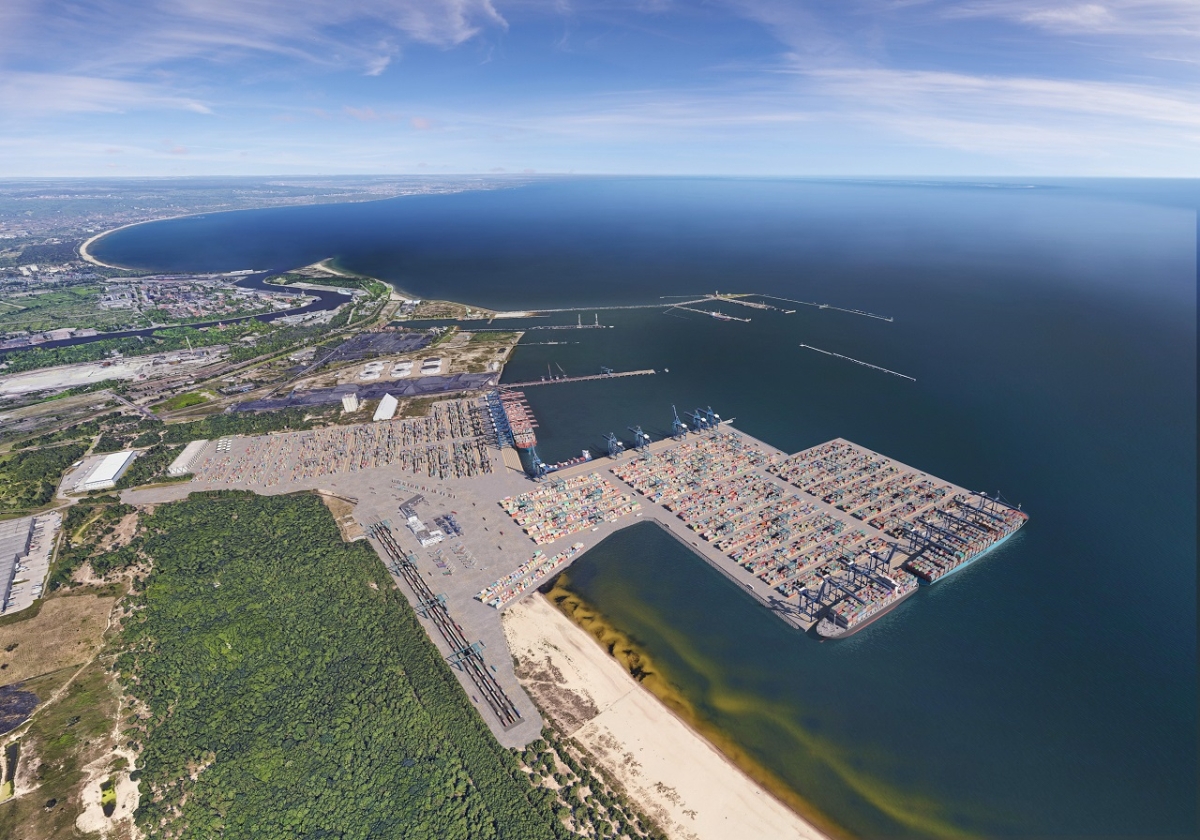
The European Bank for Reconstruction and Development will provide a €100 million loan for the construction of a third container terminal at DCT Gdańsk, the bank said on Wednesday.
With the addition of the new terminal, the total capacity of the port in Gdańsk is expected to increase by almost 50 percent by 2025.
The European Bank for
Reconstruction and Development (EBRD) has joined a group of banks
that will finance the construction of a third deep-water container
terminal at the Polish port of Gdańsk on the Baltic Sea, the bank
said Wednesday. "The EBRD's €100 million loan is part of an
€863.5 million financing package from a group of local and
international lenders for the Polish company DCT Gdańsk and its
parent company, Baltic Hub," - EBRD indicated.
The loan has a preferential nature - in the event of the holder's bankruptcy, repayment of such debt is a priority. It was explained that the loan to Deepwater Container Terminal (DCT) Gdańsk is based on environmental, social and governance (ESG) key performance indicators (KPIs), and will be used to finance the construction of the new Terminal 3 at the Port of Gdańsk, as well as the modernization of Terminals 1 and 2 and other facilities. For the new terminal, there will be 717 meters of deep-water quay and 36 hectares of shipyard space. In the first phase of the investment, it will be equipped with 7 energy-efficient ship-to-shore cranes and 20 semi-automatic rail-mounted cranes.
Gdańsk is the only deep-water terminal port in Poland and the only port in the Baltic Sea capable of handling the largest ULCV (Ultra Large Container Vessel) type container ships, up to 400 meters in length. The EBRD noted that the new terminal will facilitate increased trade in fast-moving consumer goods, machinery and electronics between Europe and Asia.
"DCT Gdańsk is one of the fastest growing ports in Europe, and upon completion of this project, it will become one of the 10 largest ports in Europe in terms of goods transported," noted Nandita Parshad, EBRD Managing Director for Sustainable Infrastructure. She added that global events of the past few years have shown the important role logistics plays in economic security.
Terminal 3 is expected to handle the first ships by the end of 2024, with the entire project scheduled for completion in 2025. The first phase of the expansion will increase DCT Gdańsk's handling capacity by 1.5 million TEUs from the current 2.9 million - a Twenty-foot Equivalent Unit (TEU) is a unit of measurement for a standard container of about 39 cubic meters. This will increase the port's total handling capacity by almost 50 percent by 2025.
As recalled by the EBRD, the bank has previously been involved in investments related to DCT Gdańsk. "In 2014, the bank lent it €31 million for the construction of Terminal 2, and in 2019 it supported the company's expansion through acquisition by new shareholders with a loan of €46.25 million," the statement said.
DCT Gdańsk has been operating since 2007 and has an annual handling capacity of nearly 3 million TEUs. The total length of the terminal's two deep-water berths is 1.3 kilometers, allowing it to handle four vessels simultaneously. The terminal handles more than 600 vessels per year, including 100 of the world's largest container ships. In 2021, DCT Gdańsk handled more than 2.09 million TEUs.
According to the EBRD, shares in
DCT Gdańsk are held by PSA International (40 percent), the Polish
Development Fund (30 percent) and IFM Global Infrastructure Fund (30
percent).


